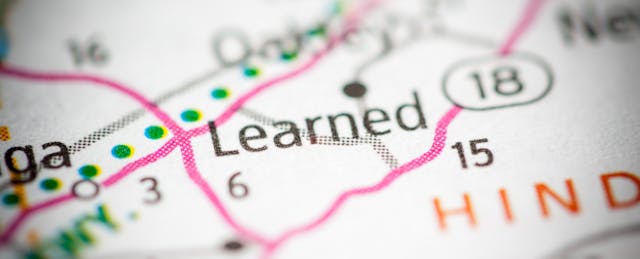Editor’s note: This is a response to a post from EdSurge columnist Michael Horn, “Why Google Maps—not Netflix or Amazon—Points to the Future of Education.”
Dear Michael,
I am such a fan of your work that I generally treat the things you say about education as gospel. So when I found myself resisting your piece that asked whether “Google Maps” might be the right metaphor for the future of education, I figured I should scribble some notes about why.
First, I agree with you that the shopping metaphors (Amazon and Netflix) are a dreary way to talk about education. Let’s drop them.
I much prefer the Google Maps metaphor with its evocation of dynamic, user-driven journeys supported by technology. But I continue to worry that this metaphor has one minor flaw in practice—the maps don’t exist yet. We have great maps for the learning trajectories of foundational skills in reading and for number and operation in math. Schools should use these maps more than they do.
Yet for most of human knowledge and thinking, the maps remain elusive. In fairness, your claim was that the map metaphor points to “the future of education” and I’m making a statement about the present. But this problem is real and it may turn out not be temporary. The maps may elude us for more fundamental, epistemological reasons.
I don’t know if your proposition “by taking advantage of digital data from a fuller spectrum of learning, including projects, presentations, essays, and proofs, it is possible to locate the learner in real-time and then map where they are against where they are going” was a description of something you’ve seen that has succeeded in doing so, or just a hypothesis about what might be possible in the future. Our experience at Amplify is that rich data sets like the one you describe are noisy and idiosyncratic, especially in upper grades. They don’t seem to be reducible to the measurable, repeatable relationships that maps require. Many of us had hoped that we could regress our way to such maps if we just had enough big data, or enough student trajectories to work with, but this seems not to be materializing.
You also describe an alternative process whereby teachers make maps based on craft knowledge. The problem is that such maps are usually derived from the order in which a given teacher teaches the material, rather than any cognitive learning progression. Such sequences are useful, but they aren’t maps that another could follow under different circumstances or in a different instructional regime. If it is like Google maps, then it should work equally for everyone.
The examples you offer of education efforts that have embraced the map metaphor seem to be presenting themselves in the form of linear lists. Lists are useful, but they aren’t maps, unless the journey is linear.
What if it turned out that the real model of human learning was something more like an intricate filigree woven in four or more dimensions? What if it turned out to be riddled with volatile feedback loops—that differ for each individual at each time—and that this volatility caused the peaks and valleys and islands to move and reshape themselves, sometimes slowly and sometimes all at once? Would we still want to flatten it into a map? Maybe, since we humans are better navigators in 2D. But I fear we would need to understand a lot more about this intricate model before we can make responsible decisions about how best to project it onto a map.
Pretending that teachers and students can navigate using maps that are a blurry abstraction, or a list of directions that partially worked for someone else, could lead to a lot of lost teachers and students. When they finally pull off at the next exit to ask directions, I’d rather not be the gas station attendant responsible for getting them to their destinations.


